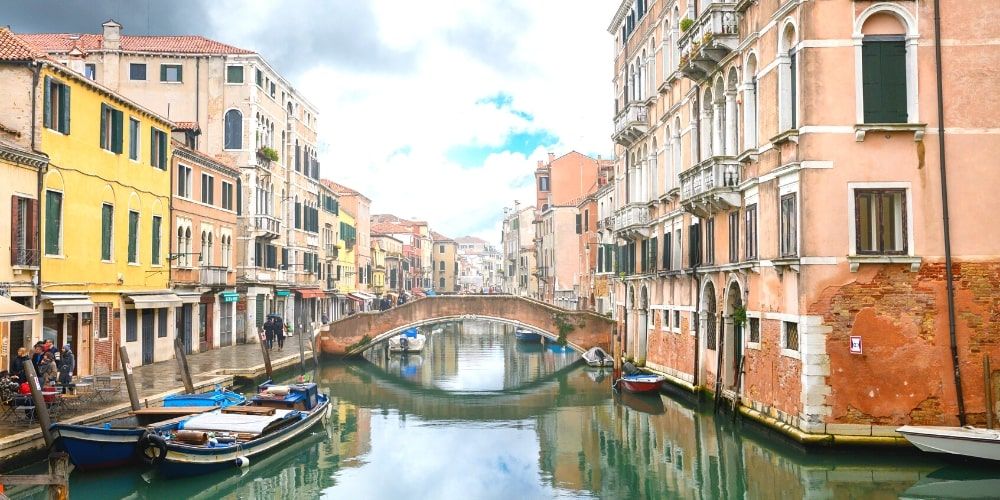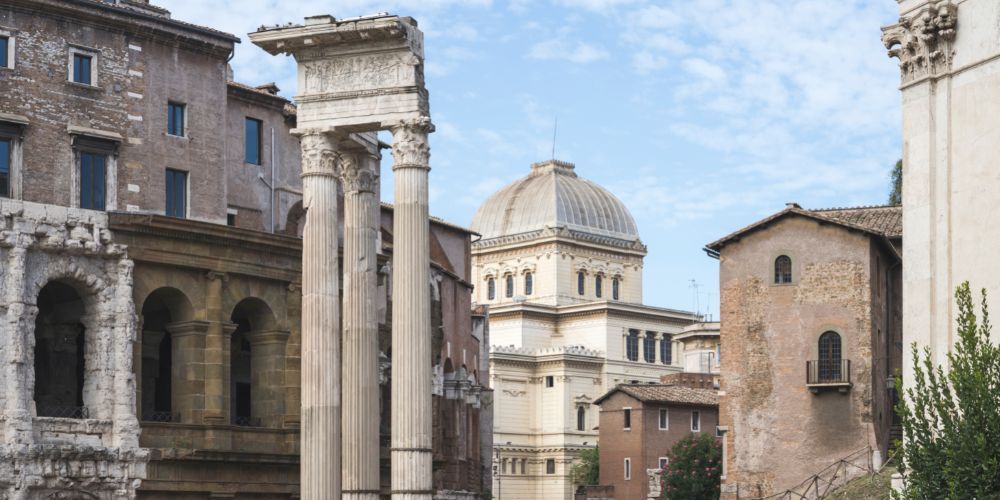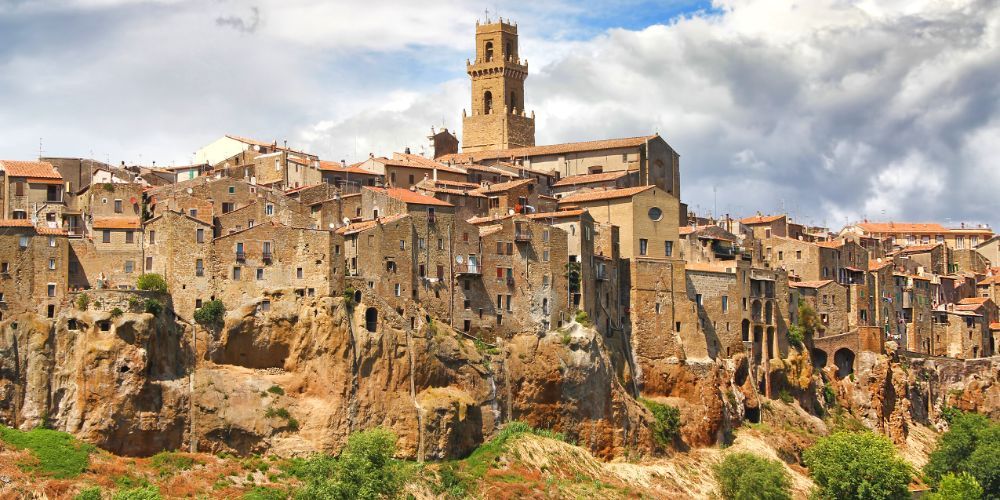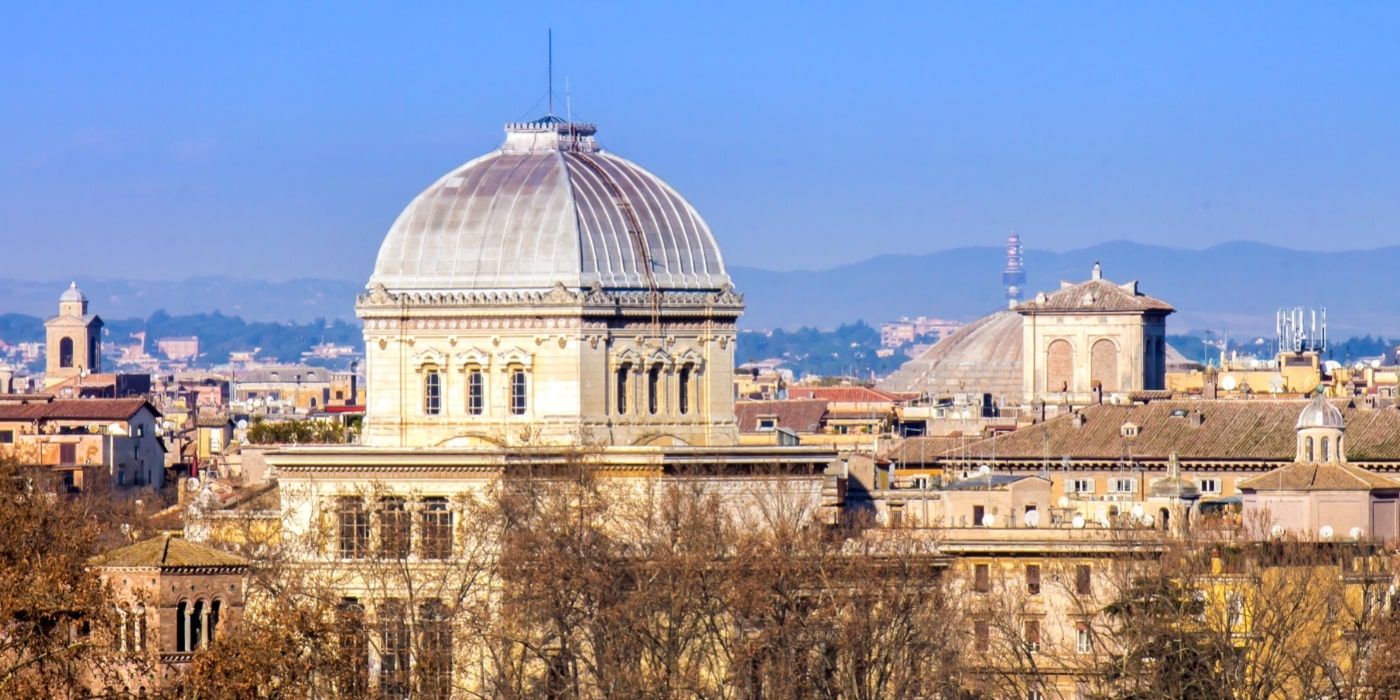Visiting a Jewish quarter means approaching a fascinating world that perhaps many people still know too little about.
It's not only a very ancient civilization, from which the three main monotheistic religions are derived, but also a culture with a strong identity that has found expression in literature, art, phylosophy, complex symbolism, and even good food.
Its history is long and unfortunately often difficult, entwined in glove with that of the rest of Italy.
Let's find out where to find and what to see in the most important Jewish quarters of Italy.

The three islands of Venice's Jewish quarter

In Cannaregio, Venice, there are three islands connected by bridges. Here, starting from 1516, the Jewish people who had been living and working in town for about three centuries, were confined.
The community, both secluded and prosperous, was large and to cope with the shortage of housing it built narrow and taller than average houses. Even today these buildings, often with colorful facades, characterize Venice's Jewish quarter, but walking through its streets you will discover much more.
The five synagogues, for example, built on top of the buildings and therefore almost invisible from the outside, or the Banco Rosso, a pawnshop whose old building has been restored recently.
The first Rabinic Bible in history was printed in Venice and is kept in the Jewish Museum together with manuscripts, works of art, everyday objects and many other historical testimonies.
There are also the restaurants or bakeries where you can have some tasty specialties of kosher cuisine, plus a large number of artisan shops, small art galleries, shops and workshops to animate this somewhat hidden but always very lively corner of Venice.
In Rome's Jewish quarter, among ancient suggestions and trendy restaurants

Compared to the Venice's one, the Jewish quarter of Rome is only a few years younger, but the streets and squares that we can see today date back to the new construction that took place in the 19th century. This, of course doesn't make it any less interesting.
It could be said that the Jewish quarter of Rome is the most "fusion" in Italy and not only for its excellent restaurants. Here you can indeed taste both the traditional specialties of the Judaic/Roman cuisine, such as the famous artichokes alla giudia (in jewish style) or the ricotta and sour cherry jam tart, and a mix of kosher and international dishes.
Between Lungotevere and Via del Portico d'Ottavia, however, there is an incredible mix of archeology and modern architecture, of Jewish religious buildings, alongside the remains of pagan temples or Christian churches.
The large, beautiful Synagogue, also known as the Tempio Maggiore dates back to the early 1900s and also houses a museum. The Portico d'Ottavia, on the other hand, dates back to the Augustan age and today incorporates the church of Sant'Angelo in Pescheria. Also not to be missed is the Theater of Marcellus, from the Augustan age as well, and considered the Colosseum's little brother.
Another famous monument in the neighborhood is the Fontana delle Tartarughe, which has Bernini among its authors.
The Pons Judaeorum, or Ponte dei Quattro Capi, instead connects the Jewish quarter with the Tiber Island, the islet in the Tiber with legendary origins.
Furthermore, walking on the cobblestones, you will often be able to see the stumbling blocks. These brass pebbles are a painful but necessary reminder of the victims of the Holocaust. In Rome, to date, there are three hundred of them.
Tuscany is magical landscape where everything is gentle all around, everything is old and new.
The Jewish quarter of Pitigliano is reborn: a Jerusalem in miniature

The village of Pitigliano is a hidden gem in the heart of Tuscany, which is already worth a visit in itself.
Furthermore, a small Jewish community has lived here for many centuries in harmony with the local population. This is why Pitigliano is also nicknamed Little Jerusalem and in fact it has been, in various phases of hits history, a sort of oasis of peace for the persecuted population.
The Jewish quarter of Pitigliano is not very large, but it's certainly very charmin, even more so after the restoration and new activities that have been giving life back to the community for some decades.
The Synagogue which has reopened a few years ago is a jewel of stucco, wood, epigraphs and important religious testimonies. Next door is a Museum recalling the different customs and history of the Jewish culture in this region. The cemetery, the ritual bath, the slaughterhouse and the oven where the typical unleavened bread was baked at Easter, were also restored.
There is even a still running cellar that produces excellent kosher wine.
The evocative alleys of Ferrara's Jewish quarter
In Ferrara, as in many other Italian cities, the Jewish community lived for many centuries, between the welcome of the Este family and the hostility of the Church. Although many works have been carried out over time to widen the roads or rebuild the buildings, today there are still many testimonies of this ancient culture.
Many of the typical buildings with brick facades have remained intact and can be clearly seen along the small streets that made up the ancient medieval layout. Between these alleys there was always a bustling activity, with shops, a rabbinical academy and four synagogues.
The heart of the Jewish quarter of Ferrara was, and still is, Via Mazzini, where the Synagogue and a first museum are located, while not far away is the MEIS, the National Museum of Italian Judaism and the Shoah.
About the author
Written on 27/01/2023



Paola Cirino
A visit to Italy's cities of art would not be complete without a stop in the Jewish quarters. Here are the most important Jewish quarters in Italy.